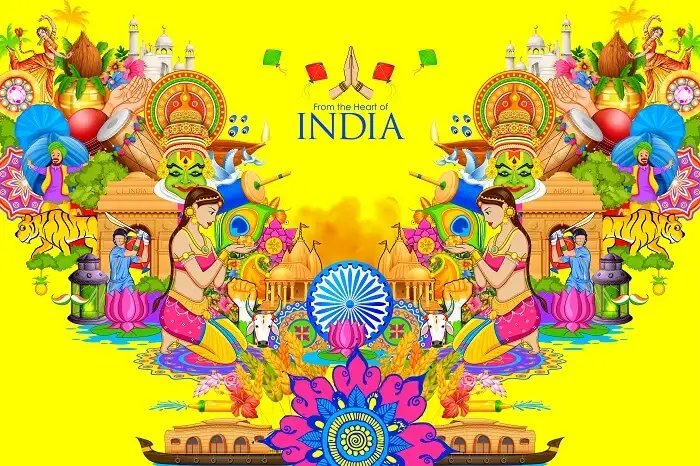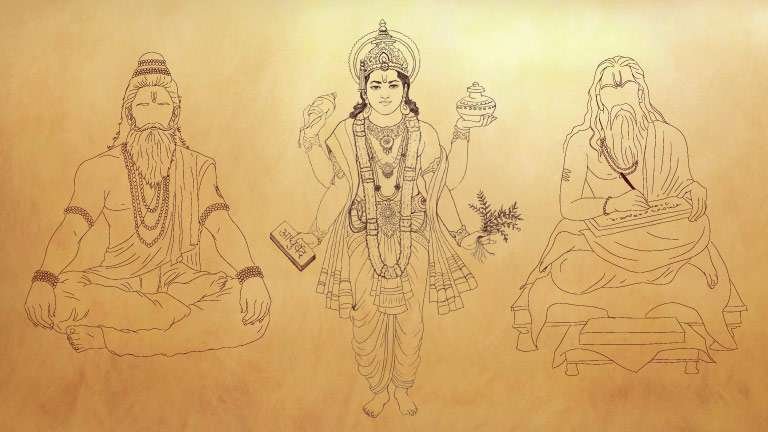Exploring the Rich Culture and Traditions of India
India is a land of diversity and its culture and traditions reflect that beautifully. From the vibrant festivals to the delicious food, India has a rich cultural heritage that has been passed down through generations. In this blog post, we will delve into the depths of Indian culture and traditions and discover the beauty that lies within.

Festivals: India is famous for its festivals, which are celebrated with great pomp and show. From Diwali to Holi, each festival has its unique significance and is celebrated with enthusiasm all over the country. Diwali, the festival of lights, is celebrated to mark the victory of good over evil. People light up their homes with diyas and candles, and burst crackers to celebrate the occasion. Holi, on the other hand, is a festival of colors, where people smear each other with colored powder and water.
Cuisine: Indian cuisine is known for its rich flavors and variety. From spicy curries to sweet desserts, Indian food is a treat for the taste buds. Each region in India has its unique cuisine, and the food varies from state to state. North Indian food is known for its rich gravies and bread, while South Indian cuisine is famous for its rice dishes and coconut-based curries. The use of spices is common in Indian cooking, which adds flavor and aroma to the dishes.
Art and craft: Indian art and craft have a rich history, which dates back to ancient times. From intricate embroidery work to beautiful paintings, Indian art is a blend of tradition and modernity. Indian handicrafts are also famous all over the world. From handwoven carpets to intricate pottery, Indian artisans create beautiful and unique pieces of art.
Clothing: Indian clothing is known for its bright colors and intricate designs. From the saree to the salwar kameez, Indian clothing is a beautiful blend of tradition and fashion. Each state has its unique style of clothing, and the fabric and designs vary accordingly. For example, the traditional attire of Rajasthan is colorful and adorned with intricate embroidery work, while the clothing in Kerala is simple and made of cotton.
Religion: India is a secular country, where people of different religions coexist peacefully. Hinduism is the predominant religion in India, followed by Islam, Christianity, Sikhism, and Buddhism. Each religion has its unique customs and traditions, and people celebrate their festivals with great zeal and enthusiasm.
Languages: India is a land of diverse languages, with over 22 official languages and countless dialects. Hindi is the most widely spoken language in India, followed by Bengali, Telugu, Marathi, Tamil, and many others. Each language has its unique script, literature, and cultural significance, and adds to the rich cultural heritage of the country.
Dance forms: Indian dance forms are a beautiful representation of the country’s culture and traditions. From classical dance forms like Bharatanatyam, Kathak, and Manipuri to folk dances like Bhangra, Garba, and Dandiya, Indian dance forms are a treat for the eyes. Each dance form has its unique style, costume, and music, and tells a story through its graceful movements.
Architecture: Indian architecture is a blend of ancient and modern styles, reflecting the country’s rich history and cultural diversity. From the majestic forts and palaces of Rajasthan to the intricate carvings of the temples in South India, Indian architecture is a feast for the eyes. The use of intricate carvings, colorful tiles, and unique designs is common in Indian architecture, and adds to the beauty of the buildings.
Weddings: Indian weddings are a grand affair, where families come together to celebrate the union of two people. From pre-wedding ceremonies like mehndi and sangeet to the wedding rituals like the pheras and kanyadaan, Indian weddings are steeped in tradition and symbolism. The bride and groom dress up in traditional attire, and the wedding feast is a delicious spread of Indian cuisine.
Sports: India has a rich history in sports, with cricket being the most popular sport in the country. Other popular sports in India include football, hockey, and badminton. The country has produced many world-class athletes, who have made a mark on the international stage. Sports are an integral part of Indian culture, and are celebrated with great enthusiasm.
Yoga and Meditation: Yoga and meditation have their roots in ancient India and are an integral part of Indian culture. Yoga is a physical and mental practice that involves various asanas (postures) and breathing techniques, aimed at improving physical and mental well-being. Meditation is a technique of calming the mind and achieving a state of deep relaxation and awareness. Yoga and meditation have gained popularity all over the world and are widely practiced for their numerous health benefits.
Music: Indian music is a beautiful blend of melody, rhythm, and emotion. From classical music to popular Bollywood songs, Indian music has a unique style that is recognized worldwide. Indian classical music is known for its intricate ragas (melodic structures) and talas (rhythmic patterns), while Bollywood music is known for its catchy tunes and colorful dance numbers.
Literature: Indian literature has a rich history, dating back to ancient times. From the Vedas and Upanishads to the works of famous authors like Rabindranath Tagore and Vikram Seth, Indian literature is a treasure trove of wisdom, philosophy, and creativity. The use of rich imagery, symbolism, and metaphors is common in Indian literature, and adds to its beauty and depth.
Jewelry: Indian jewelry is known for its intricate designs and craftsmanship. From gold and diamond jewelry to traditional silver jewelry, Indian jewelry is a reflection of the country’s rich cultural heritage. Each piece of jewelry has its unique design and significance, and is often adorned with precious stones and intricate filigree work.
Education: Education has always been highly valued in Indian culture, and the country has a rich tradition of academic excellence. The ancient universities of Nalanda and Takshashila are examples of India’s rich academic legacy. Today, India has numerous universities and educational institutions that attract students from all over the world.
Ayurveda: Ayurveda is an ancient Indian system of medicine that is based on natural remedies and holistic healing. Ayurveda is believed to have originated in India more than 5,000 years ago and has since spread to other parts of the world. Ayurvedic remedies involve the use of herbs, spices, and other natural ingredients, and are aimed at treating the root cause of a disease, rather than just its symptoms.
Sanskrit: Sanskrit is an ancient Indian language that has its roots in the Vedic period. It is considered to be the mother of all languages and is the primary language of Hinduism, Buddhism, and Jainism. Sanskrit is known for its complex grammar, rich vocabulary, and its ability to express abstract concepts.
- Exploring the Rich Culture and Traditions of India
- Discovering the Beauty of India: A Journey Through Its Culture and Traditions
- From Holi to Bollywood: A Comprehensive Guide to Indian Culture and Traditions
- Unity in Diversity: The Fascinating World of Indian Culture and Traditions
- Ayurveda to Bhangra: An In-Depth Look at the Vibrant Culture and Traditions of India
What is the significance of Raksha Bandhan in Indian culture?
Raksha Bandhan is a festival that celebrates the bond between brothers and sisters. On this day, sisters tie a sacred thread (rakhi) on their brothers’ wrists, and brothers promise to protect and care for their sisters. The festival is a symbol of love and affection between siblings and is celebrated with great enthusiasm across the country.
What are the different languages spoken in India?
India is a land of diverse languages, with over 22 official languages and countless dialects. Hindi is the most widely spoken language in India, followed by Bengali, Telugu, Marathi, Tamil, and many others. Each language has its unique script, literature, and cultural significance, and adds to the rich cultural heritage of the country.
What is Ayurveda, and how is it practiced in India?
Ayurveda is an ancient Indian system of medicine that is based on natural remedies and holistic healing. Ayurvedic remedies involve the use of herbs, spices, and other natural ingredients, and are aimed at treating the root cause of a disease, rather than just its symptoms. Ayurveda is still widely practiced in India today, and is often used in conjunction with modern medicine.
What is the significance of the Taj Mahal in Indian culture?
The Taj Mahal is one of the most iconic monuments of India and is a UNESCO World Heritage Site. It is a white marble mausoleum that was built by the Mughal emperor Shah Jahan in memory of his wife Mumtaz Mahal. The Taj Mahal is known for its intricate carvings, beautiful gardens, and stunning architecture, and is a symbol of love and devotion.
What is the importance of unity in diversity in Indian culture?
India is a land of diversity, where people of different religions, cultures, and traditions coexist peacefully. This unity in diversity is reflected in every aspect of Indian culture, from food to clothing to festivals. India’s diversity is its strength, and it has become a symbol of tolerance, acceptance, and love.
What is the traditional attire of Indian women?
Saree is a traditional Indian attire that is worn by women across the country. It is a long piece of cloth that is draped around the body and is often accompanied by a blouse and petticoat. Sarees come in a variety of fabrics, colors, and designs, and are worn on various occasions, from weddings to formal events.
What are the different forms of Indian dance?
Indian dance forms are a beautiful representation of the country’s culture and traditions. From classical dance forms like Bharatanatyam, Kathak, and Manipuri to folk dances like Bhangra, Garba, and Dandiya, Indian dance forms are a treat for the eyes. Each dance form has its unique style, costume, and music, and tells a story through its graceful movements.
What is the significance of yoga and meditation in Indian culture?
Yoga and meditation have their roots in ancient India and are an integral part of Indian culture. Yoga is a physical and mental practice that involves various asanas (postures) and breathing techniques, aimed at improving physical and mental well-being. Meditation is a technique of calming the mind and achieving a state of deep relaxation and awareness. Yoga and meditation have gained popularity all over the world and are widely practiced for their numerous health benefits.
- Raksha Bandhan significance
- Languages spoken in India
- Ayurvedic remedies
- Taj Mahal architecture
- Unity in diversity India
- Indian women sarees
- Indian classical dance forms
- Yoga and meditation benefits
Exploring the Rich Culture and Traditions of India



